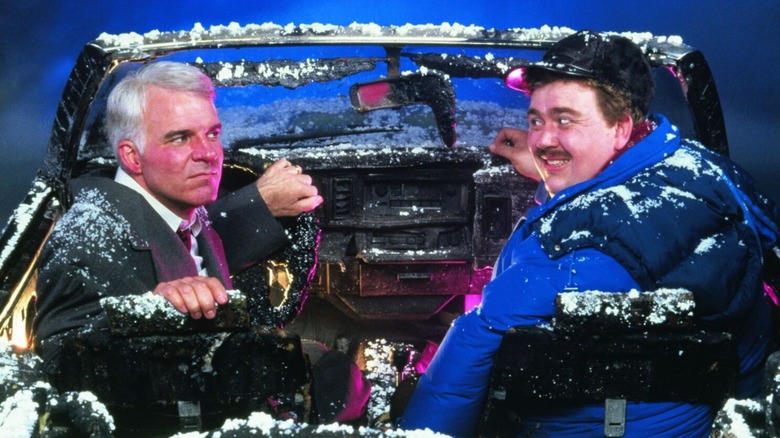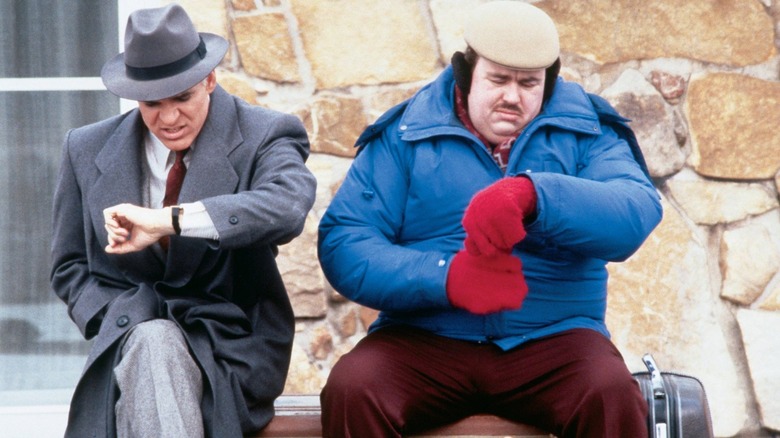Steve Martin And John Candy's Improv Got Out Of Hand On Planes, Trains And Automobiles
Ad-libbing is imaginative and spontaneous. Comedians who yearn to be unshackled from every single word in the script relish opportunities to show off their natural wits and humor. The late writer-director-producer John Hughes had no problem releasing the cuffs. Because of this, his 1989 comedy "Uncle Buck" became a playground for John Candy. Before that, the late Canadian actor starred in another Hughes movie, "Planes, Trains, and Automobiles." That time, the improv between him and co-star Steve Martin got out of hand.
In "Home Alone" — also written and produced by Hughes — Candy helps Catherine O'Hara get home to her unattended son for Christmas. But in "Planes, Trains and Automobiles," he's the main force that prevents Steve Martin from making it home to his wife and children for Thanksgiving. Martin plays Neal Page, a marketing executive who's in a rush to fly out of New York to Chicago, but a plethora of unimaginable transportation issues leave him desperate and stuck with annoying shower ring curtain salesman and suspected thief Del Griffith (Candy). The two scramble to use any mode of transportation available to get back to the Windy City.
The story alone yields endless possibilities to produce big laughs. Add Martin and Candy to the mix, and you're in store for a laughathon. Throughout the movie, the two comedy greats tossed their scripts aside and worked off each other, but their ad-libbing became a big problem for the camera crew and for themselves.
Ad-libbing in the freezing cold was brutal
"Planes, Trains and Automobiles" was shot in New York in the winter of '87. According to the John Hughes biography "John Hughes: A Life in Film," the freezing temperatures sucked all the fun out of Steve Marine and John Candy's improv groove.
During filming some outside scenes, Hughes employed a one-shot shooting technique, which positions just one actor in the frame of the camera. For example, in the scenes in which Neal and Del ride together in a car, the camera focuses on only one of the characters as he talks to the other. The problem is that when one of them ad-libbed while filming, the actor not in the frame of the camera naturally ad-libbed back. This meant that the camera crew had to reposition themselves to catch the response. Martin elaborated in the biography:
"It was getting ridiculous, covering everything fifty times if we ad-libbed. This would go on and on and was happening in very different circumstances — like in an outdoor car with the roof burned off. It was literally freezing. I was in a topcoat and John [Candy] a parka. All this ad-libbing was making the camera crew swing around us in the camera car again and again [to cover the shots]. Candy and I finally agreed not to ad-lib anymore."
Despite Mother Nature, it appeared that Candy and Martin had fun working with each other. Martin called Candy one of his best acting partners. "Planes, Trains and Automobiles" still holds up today with its holiday themes of family and thankfulness, making it one of John Hughes' best movies.

